I compiled this gearlist based on the equipment for my five-day summer trek in the Austrian Alps, but then five days seemed like nothing to me, so I traveled with this equipment for a total of three weeks. I walked solo from Vienna to Mallnitz in the Hohe Tauern.
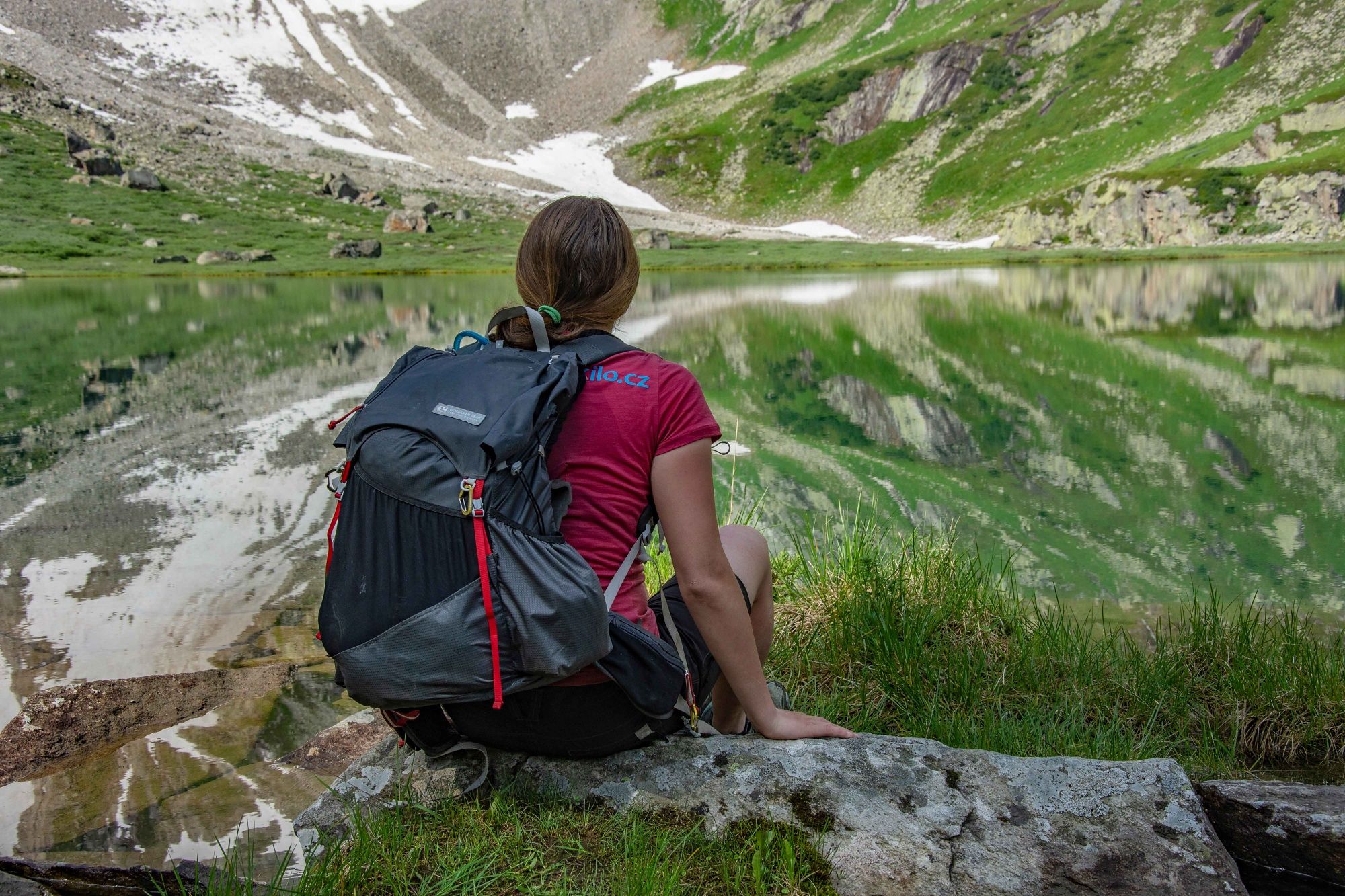
INTRODUCTION
However, I am relatively small, so I have a shorter sleeping bag and my clothing is lighter than that of larger people. You can save weight as well if you go on a trek as a couple or in a group, since you can share some equipment (tent, cooking gear, etc.). Generally, the weight of items that are variable during the trek, such as food, fuel, and water, is not included in gear lists.

How to navigate the list
Items that I consider essential and that should not be missing on any trek are marked with a blue arrow, while items that I consider optional, depending on the type of the specific trek, are marked with a red arrow. By clicking on each item, you will get more information about it.
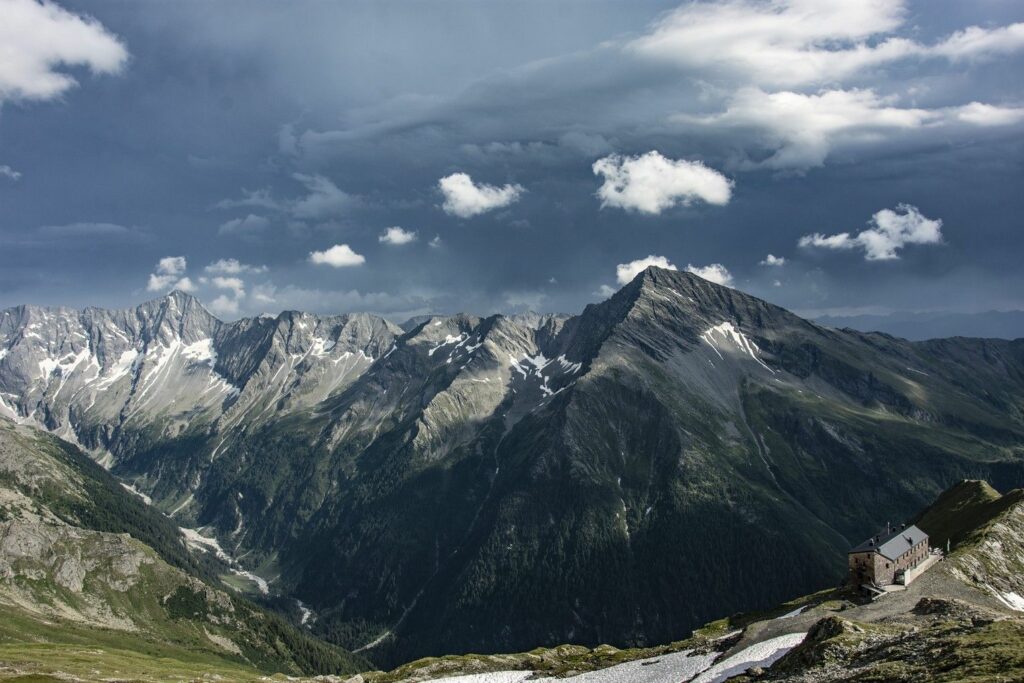
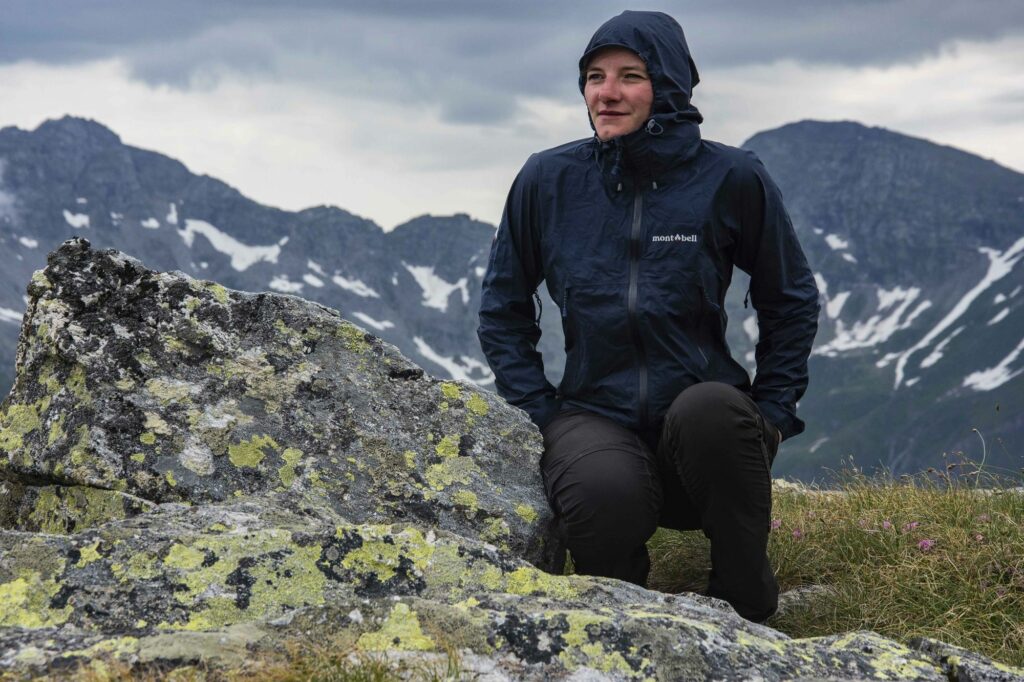
Is There a Universal Gear List?
No specific gear list for treks can be considered universal, because each of us has different needs and experiences, and the conditions in the mountains can vary significantly, whether by destination, altitude, or season. The list always needs to be adapted to the specific journey and personal requirements. This list is intended for the period from spring to autumn and does not account for challenging snowy sections, for which you would also need to bring crampons, an ice axe, gaiters, a helmet, and so on.
So wherever you go, I wish you a happy journey, lots of experiences and a light backpack!
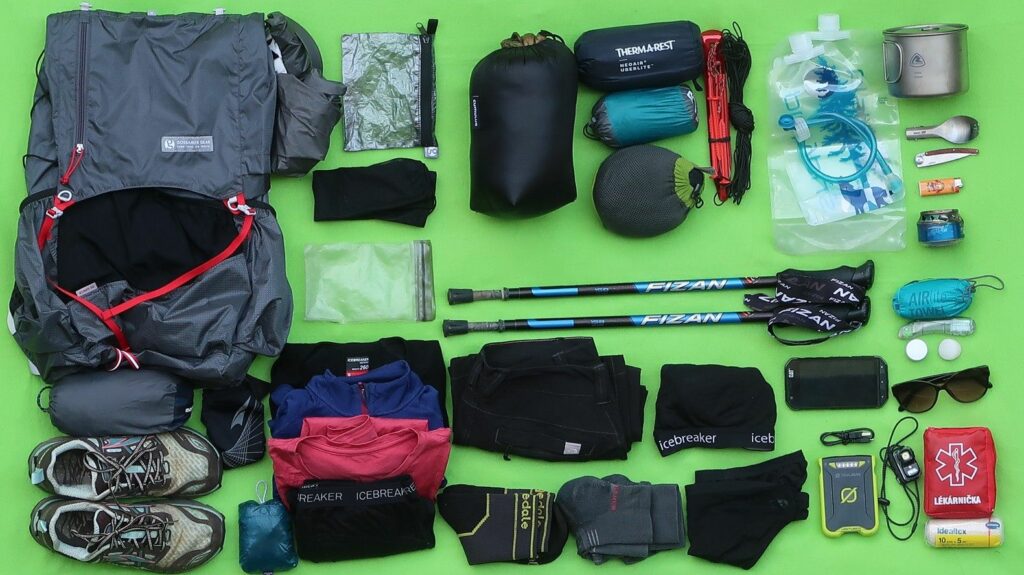
1) Pack
It’s ideal to choose a backpack with a smaller volume to motivate yourself not to bring unnecessary items, but be careful to ensure that after packing all your gear, there is still enough space left in the backpack for supplies and water. If you have the opportunity to buy food every couple of days during your trek, a smaller backpack volume will suffice compared to a trek where you might not be able to restock supplies for two weeks. If you’re carrying a lot of supplies, it’s a good idea to check the load capacity of the backpack you want to pack into beforehand.
My choice: Gossamer Gear Kumo 36, 555 g
Larger alternative: Gossamer Gear Gorilla 50, 890 g
More durable alternative: Hyperlite Mountain Gear Unbound 40, 825 g
Larger and more durable alternative: Durston Kakwa 55, 871 g
To keep your sleeping bag, clothing, and electronics dry in any weather, it’s a good idea to use a waterproof pack liner that will mostly fill the volume of the backpack. You can also organize your items into smaller waterproof bags. This is more reliable than a rain cover, which can shift on the backpack or be torn off by the wind. On the other hand, with a rain cover, you can store gear on the outside of the backpack or in the pockets that you want to keep dry. The safest option is to use both a waterproof pack liner and a rain cover, because during heavy and persistent rain, a rain cover alone won’t be sufficient. For small electronics, money, and a mobile phone, I use a simple transparent bag with a double closure.
My choice: Waterproof backpack liner, 81 g and waterproof aLoksak bag (can also serve as a wallet), 6 g
Alternative: Sea to Summit Ultra-Sil Dry Bag, from 30 g
Alternative: Backpack rain cover, 98 g
Hygiene items are best packed in a resealable bag to keep them together and to prevent any spills if a bottle opens inside the backpack.
Recommendation: MamTam Tyvek Toiletry Bag, 13 g
It’s a good idea to keep items used for similar purposes together, so you don’t have to waste time searching through your backpack. For example, I store clothing in mesh sacks. If I don’t have a large waterproof liner in my backpack, I use smaller waterproof bags. You can also fold your clothes using the bundle wrapping method, or if you have leggings for sleeping, you can stuff other clothes into the legs.
My choice: Cocoon Mesh Stuff Sack, various sizes, up to 61 g
Organizational bag Hyperlite Mountain Gear Pods, from 34 g
Waterproof: Sea to Summit Ultra-Sil Dry Bags, various sizes, from 30 g
Practical clothing alternative that also doubles as a pillow: Hyperlite Mountain Gear Stuff Sack Pillow, from 40 g
2) Sleep system
You can choose a sleeping bag with synthetic fill or down. However, for ultralight packing, most people opt for down, as it is significantly lighter than synthetic materials in relation to thermal comfort. High-quality down expands more in the sleeping bag than synthetic fill, creating air insulation. The greater the volume that the down can hold, the higher its „loft,“ measured in cuin (cubic inches). The more cuin the down has, the warmer the sleeping bag will be for the same weight of fill. If you have an inflatable sleeping pad, you can use a quilt instead of a sleeping bag, which is lighter.
My choice: Cumulus X-Lite 300 Sleeping Bag, 465 g
Cheaper alternative: Cumulus Lite Line 400 Sleeping Bag, 705 g
Summer alternative: Cumulus X-Lite 200 Sleeping Bag, 350 g
Winter alternative: Cumulus Teneqa 700 Sleeping Bag, 1150 g
Three-season quilt: Cumulus Quilt 250, 490 g
Some people prefer to sleep under the open sky and, in case of rain, set up a tarp or a lightweight shelter without a floor. Others swear by tents. Everyone has their reasons for preferring one over the other. The most sensible approach is to rely on your own experience and, especially, to think ahead about the kind of weather you might encounter on your trip and how well you are able to handle it. Personally, I believe that for most treks, a tarp shelter is perfectly sufficient and a significantly lighter option than a tent, if you know how to set it up properly. However, some people feel safer or more comfortable in a tent. Whatever you bring with you, you should be able to set it up even in the dark.
My choice: Sea to Summit Ultra-Sil Nano Tarp Poncho, 197 g
One-person tent alternative: Durston X-Mid Pro 1 DCF, 480 g
Cheaper one-person tent alternative: Durston X-Mid 1, 915 g
Two-person alternative: Gossamer Gear The Two, 788 g
You can choose either an inflatable or foam sleeping pad (self-inflating pads are generally heavier). The advantage of inflatable pads is better comfort and compactness, while foam pads are more durable. For a trek where you’ll be sleeping in a tent or you are certain that you’ll have plenty of flat spots to sleep, an inflatable pad is usually the obvious choice. However, if you’re the type to sleep under the stars, search for sleeping spots in the dark, or nap anywhere on the roadside, you’ll appreciate a foam pad, which is quick to unpack and pack again and can withstand thorny terrain. Personally, I tend to be more of a „punk“ type. I prefer an inflatable pad, primarily in snowy conditions. A foam pad can also be easily shortened to save a few extra grams if needed.
My choice: Therm-a-Rest Z-Lite Sleeping Pad (shortened), under 370 g
Inflatable sleeping pad: NEMO Tensor™ All-Season Sleeping Pad, from 407 g
Tent pegs are also useful for setting up a tarp shelter. While it’s possible to build without them, they significantly expand your setup options and, compared to sharpened wooden sticks, provide greater stability and wind resistance. If you want to lighten your load, you can mix different types of pegs—use reliable, slightly heavier ones for basic tent setup, and add a few lightweight ones as well.
My choice: 9 x MSR Mini Ground Hog Stakes, 9 x 10 g
Lightweight pegs, also suitable for cabin luggage: Swiss Piranha Plastic Tent Pegs, 3 g
A waterproof bag that protects your sleeping bag from moisture is especially appreciated by those who enjoy bivvying under the stars or using a tarp. It also protects the sleeping bag from dirt and wind, which helps increase thermal comfort. It should be made from a well-breathable membrane, otherwise, you’ll end up sweating inside and getting wet, even if not a drop of rain falls from the sky.
My choice: High Point Super Light 2.0 Sleeping Bag Cover, 262 g
A groundsheet can be useful not only for building a shelter but also as a protective layer under an inflatable sleeping pad or under a tent.
Recommendation: DuPont Tyvek Groundsheet, 100 g
If you don’t want to waste time and energy inflating your pad and would rather start preparing dinner instead, a small pump comes in handy.
Recommendation: Flextail Zero Pump, 49 g
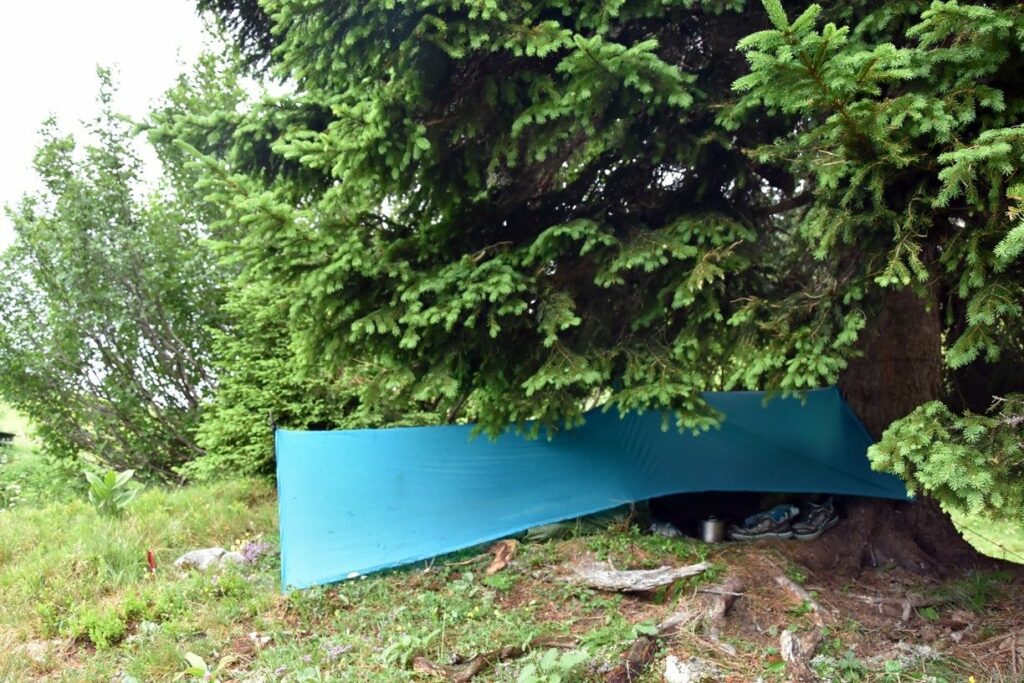

3) Clothing
An important parameter of the membrane is not only the water column but also the breathability, so you don’t get overheated inside the jacket. It’s an advantage if the jacket has underarm ventilation, an adjustable hood that fits over a helmet, adjustments around the neck, cuffs, and hem, and possibly pockets located above the waist belt. Three-layer membranes are more durable than lighter ones, but are usually heavier.
My choice: Montbell Versalite Jacket (Women’s), 145 g
Men’s: Montbell Versalite Jacket (Men’s), 178 g
More durable alternative (Women’s): Montbell Storm Cruiser Jacket (Women’s), 256 g
More durable alternative (Men’s): Montbell Storm Cruiser Jacket (Men’s), 284 g
They save grams compared to shorts plus pants, and instead of changing, you simply zip or unzip the legs. They should be made of quick-drying material, with a well-designed fit for comfort. If they also feature a DWR (Durable Water Repellent) and good pockets, it´s ideal.
My choice: Mammut Runbold Zip Off Pants, 281 g
Men’s: Mammut Runbold Zip Off Pants, 299 g
Excellent materials include, for example, merino wool or Polartec fleece. A zip-up sweatshirt might be a bit heavier, but it helps regulate temperature better. In cooler weather, it’s more effective to layer two sweatshirts rather than wearing one thick sweater. Personally, I’ve come to like the Montbell U.L. Thermawrap Parka with Stretch Exceloft insulation, which I wear either as a second layer instead of a sweatshirt or as an outer layer. It’s lighter than sweatshirts with similar thermal insulation properties and is also very breathable, making it great for active movement.
My choice: Montbell U.L. Thermawrap Parka women’s, 230 g
Men’s: Montbell U.L. Thermawrap Parka men’s, 277 g
Lighter women’s sweatshirt: Montane Protium Lite Pull-on Women’s, 161 g
Lighter men’s sweatshirt: Montane Protium Lite Pull-on Men’s, 193 g
It’s suitable for sleeping and as a base layer in cold weather. It should be made from a material that efficiently wicks moisture away from the body. If it’s made of merino wool, it also has the advantage of being naturally antibacterial and resistant to odor for a long time.
Women’s: Icebreaker 175 Everyday LS Crewe long-sleeve shirt, 141 g
Icebreaker Oasis Leggings, 168 g
Men’s: Icebreaker Oasis LS Crewe shirt, 213 g
Legíny Icebreaker pánské Oasis Leggings, 177 g
Only one merino wool shirt is enough for me. It resists odor for a long time, so it doesn’t need to be washed as often, and it also provides good thermal insulation, even when wet. In the summer, I regularly rinse it in rivers or streams. Of course, you can take more with you. If I’m going on a long distance trek, I also bring a needle and thread to repair any small holes – merino is not a very durable material. Nevertheless, I find merino worth it compared to synthetic shirts, which aren’t as comfortable on my skin, start to smell sooner, and transfer heat away from the body more quickly when wet.
My choice: Icebreaker Women’s Tech Lite III SS shirt, 107 g
Men’s: Icebreaker Men’s Tech Lite III SS shirt, 137 g
Good hiking socks can help prevent blisters and fungal infections on your feet. If you’re planning a summer trek, don’t be in doubt by the fact that they’re thick – merino hiking socks will wick moisture away from your feet better (they absorb more moisture) than thin ones, especially if you’re wearing hiking boots. If you have breathable running shoes without a membrane, which are very breathable, also thin merino socks should be sufficient for high temperatures.
My choice: Darn Tough Women’s Micro Crew Lightweight with Cushion socks, 53 g
Men’s: Darn Tough Men’s Micro Crew Lightweight with Cushion socks, 58 g
Unisex toe alternative: Injinji Trail Midweight Mini Crew socks, 54 g
Clothing worn directly on the body should not be restrictive, should be breathable, and it’s a big advantage if it dries quickly. A bra should not have straps that loosen or press under the shoulder straps of a backpack.
My choice: Icebreaker Women’s Siren Bikini, 22 g
Icebreaker Sprite Racerback Bra, 62 g
Men’s: SAXX Quest Boxer Briefs, 73 g
A UV-protective shirt with long sleeves and a hood is a sun hoodie. If you don’t want to apply sunscreen, you can replace a short-sleeve shirt with a sun hoodie. The hood also protects you from sunstroke.
My choice: Montbell Merino Wool Plus Light Hoodie women’s, 172 g
Men’s: Montbell Merino Wool Plus Light Hoodie men’s, 243 g
Alternative, Hat + LS T-shirt: Montbell Fishing Hat, 62 g
In the case of long rain showers, waterproof socks are especially useful for running shoes without a membrane. To prevent sweating, I recommend wearing thin merino socks underneath. How long your feet stay dry largely depends on the terrain you’re moving through in the rain – if you’re walking on a paved path, your feet might stay dry even after half a day of walking. However, in wet grass or snow, they will get damp much more quickly (this is due to the high pressure on the membrane). But even then, when the socks get damp, they still retain pleasant warmth – they are also windproof.
My choice: Bridgedale Storm Sock LW Ankle, 90 g
Membrane pants are great when it’s raining for an extended period and it’s cold. Membranes generally aren’t suitable to wear directly on the body because they lose their effectiveness when contaminated by oils from the skin, and you would also get too hot in them. That’s why I wear merino leggings underneath waterproof pants whenever possible. Waterproof pants should definitely have zippers on the legs, so they can be pulled on over shoes, or they can serve for ventilation.
Recommendation: Montbell Super Dry-Tec UL Rain Pants women’s, 126 g
Men´s: Montbell Super Dry-Tec UL Rain Pants men’s, 138 g
Windproof pants are best suited for weather that is too warm for membrane pants, but where it’s raining for an extended period and the wind is blowing. While windproof pants do get wet quickly, they tend to stick to your legs, trapping a thin layer of water that your body heat quickly warms up. They also block the wind, making it easier to maintain thermal comfort. Mine dry very quickly, so after the rain, I don’t have to carry heavy, water-soaked pants. Given their low weight, it’s a lot of benefit for just a few extra grams.
My choice: Montbell Dynamo Wind Pants Women’s, 93 g
Men´s: Montbell Dynamo Wind Pants Men’s, 97 g
When I reach a ridge or summit, I usually work up a sweat on the way, and it’s windy at the top. Water and wind can quickly draw heat away from the body, so in these situations, a small windbreaker comes in handy. I can always have it on hand because it fits into my pocket. I could also use a waterproof jacket, but there’s no need to carry it with me if I’m just going for a walk, and I prefer to save it for worse weather to keep the membrane functional for as long as possible. In cooler weather, the windbreaker helps me retain body heat, and when combined with a sweatshirt, the difference is quite noticeable. It’s especially suitable to pair with a light, breathable sweatshirt, as this combination provides high thermal insulation at a very low weight.
My choice: Montbell EX Light Wind Jacket Women’s, 40 g
Men´s: Montbell EX Light Wind Jacket Men’s, 47 g
Women´s alternative with a hood: Patagonia Houdini Jacket women’s, 93 g
Men´s alternative with a hood: Patagonia Houdini Jacket men’s, 100 g
From autumn to spring, it is indispensable for me in the mountains. It’s also useful on cooler summer evenings when I’m out with friends and I know we’ll be sitting around chatting often. When I go alone, I usually leave it at home because I warm up during the day by walking, and in the evening or morning, while cooking or unpacking, I can throw a down sleeping bag over myself. In cold, rainy weather, I put a waterproof jacket over it, and in extreme cold, I use it as a substitute for a hoodie under my winter jacket. It also serves as an insulating layer in a sleeping bag.
My choice: Cumulus Incredilite Endurance Lady, 325 g
Men’s: Cumulus Incredilite Endurance, 365 g
Lighter women’s jacket: Montbell Superior Down Parka Women’s, 225 g
Lighter men’s jacket: Montbell Superior Down Parka Men’s, 252 g
If you lose weight during long-distance treks, you might appreciate a belt.
Recommendation: Arcade Belt, 50 g
Sun protection: Montbell Fishing Hat, 62 g
Insulating: Icebreaker Pocket Hat, 39 g
Neck gaiter: Icebreaker Flexi Chute, 49 g
Lighter: Icebreaker Quantum Gloves, 38 g
Warmer: Montane Respond Glove, 67 g
Waterproof: Black Diamond UL Overmitts, 25 g
4) Shoes
For most treks, trail running shoes are enough for me. I’ve become fond of shoes without a membrane and without a drop, with a wide toe box and good grip on the sole. They are lightweight and breathable, so I don’t get blisters in them. In case of wet weather, I wear waterproof socks with them.
My choice: Altra Lone Peak 9+ Women’s Trail Shoes, 255 g
Men’s: Altra Lone Peak 9+ Men’s Trail Shoes, 306 g
To prevent dirt from getting into my low shoes, I use shoe gaiters. I don’t have to empty debris from my shoes every moment, and it also extends the lifespan of the shoes.
My choice: Getka Ultralight Gaiters, 25 g
5) Hygiene
For treks, I only take the top part of a folding toothbrush, an interdental brush, and toothpaste.
My choice: Curaprox CS 5460 Travel Set Replacement Brush Heads, 4 g
You can squeeze the toothpaste into a small container depending on how long your trek will be. Even better is concentrated toothpaste, where you only need to apply a small amount to the toothbrush.
My choice: Ajona Stomaticum Toothpaste 25 ml, 42 g
Besides drying, the towel can be used as a head cover, a neck scarf, to dry a tarp or mosquito net… and it’s best when it’s a compact, quick-drying towel with an antibacterial treatment.
My choice: Sea to Summit AIRlite Mini Towel, 52 g
Universal concentrated and biodegradable soap can be used for body and hair washing, laundry, rinsing food, such as vegetables… and because it’s concentrated, you only need to use a small amount. Before the trek, it’s a good idea to transfer it into a small bottle.
Recommendation: Lifeventure All-Purpose Soap, 127 g
A small bottle for transferring liquid products that you don’t need to carry in large packaging.
Recommendation: GSI Soft Sided Condiment Bottle Set 60 ml, 9 g
Alternative: Go Travel Cabin Bottles Set 100 ml, 98 g
To maintain a menstrual cup, you only need clean water and occasionally boil it. Unlike standard pads or tampons, it produces no waste.
Recommendation: Whoop·de·doo Menstrual Cup, 16 g
The toilet trowel can also be used as a tent peg in snow or sand.
Recommendation: BoglerCo Ultralight Backpacking Trowel, 13 g
Alum deodorant can also be a handy addition to your first aid kit, as it helps with burns, disinfects small wounds, reduces swelling from insect bites, stops minor bleeding, and can also be used for hand disinfection. A small amount of water is needed for its application. You can use a saw to cut off a small piece for the trip.
Recommendation: Purity Vision Deokrystal Deodorant, 76 g
Small nail clippers can be useful, especially if you’re going on a longer trek. However, they are not essential, as nails can also be trimmed with a sharp knife.
Recommendation: Victorinox Nail Clipper, 11 g
6) Cooking
You can stack all your cooking gear into a mess kit. You can also use it to transport food instead of a lunchbox, or to scoop water from springs.
My choice: MSR Titan Kettle 900 ml, 126 g
Alternative: GSI Halulite Minimalist II Cookware, 182 g
Alternative for two people: GSI Halulite Microdualist II Cookware Set, 505 g
Lightweight stoves are either gas or alcohol stoves. Alcohol stoves can use solid fuel, which is better for heating water than for cooking meals, or liquid fuel, which can be purchased at pharmacies or craft stores. A very light liquid fuel stove can be easily made from an empty beer can. Gas stoves are simpler to use and cook food more quickly.
My choice: DIY alcohol stove
Gas stove: Robens Fire Midge Titanium Stove, 43 g
Cookset for solid fuel: Esbit Pocket Stove, 88 g
A small folding knife is usually enough for a classic trek.
My choice: Deejo Knife, 27 g
Alternative: Antonini Old Bear Total Black Knife, 31 g
A practical utensil is the spork – a combination of a spoon and a fork. However, some people prefer a proper spoon. I prefer a folding spork, which fits into my pot.
My choice: Esbit Titanium Spork, 17 g
A cheaper alternative with a cutlery knife: Lžíce s vidličkou a nožem UCO Switch Spork Eco, 18 g
You can use a fire striker, which you’ll need to learn how to handle, or matches, preferably waterproof, or a classic gasoline or gas lighter. Whatever you prefer, I would definitely recommend having at least a few waterproof matches hidden somewhere (ideally in a survival kit) for emergencies.
My choice: Regular gas lighter
Fire striker: UCO Survival Fire Striker, 29 g
Waterproof matches: UCO Survival Stormproof Match Kit,16 g
You should be able to carry at least three liters of water on your trek. In dry areas, of course, more. I typically carry one two-liter bottle, which I also use as a hydration bladder, and one one-liter bottle. Collapsible bottles have the advantage of taking up almost no more space in your backpack than the water inside them.
My choice: Platypus Platy Bottle 2L, 36g
Platypus SoftBottle 1L, 25g
You can eat things like couscous, instant noodles, and other types of pasta, rice, oatmeal, buckwheat, legumes, chocolate, cheese, nuts, dried fruit, meat, and energy bars. Instead of standard bread, tortillas are a good option since they are long-lasting and take up less space in your backpack. Dehydrated food is weight-efficient. You can dry your own food at home, but many people prefer ready-made dehydrated meals that are tasty, nutritious, and only need to be mixed with hot water.
My choice: Summit to Eat dehydrated meals
A hydration bladder or tube that can be screwed onto a bottle makes drinking easier while walking. While taking your backpack off to drink can sometimes feel like too much effort, sipping from the tube requires no effort at all. It helps you prevent dehydration and the problems associated with it.
Tube: Platypus Drink Tube Kit, 59g
Hydration bladder: HydraPak Contour, 142g
A water filter is especially useful in areas with limited drinking water. You can find small mechanical filters that easily fit into a pocket and don’t use any chemicals for purification. A filter that removes mechanical impurities, bacteria, and protozoa should be sufficient for outdoor use. If you expect enough drinking water on your trip, it’s a good idea to pack a few water purification tablets in your first aid kit or survival kit as an emergency backup.
Recommendation: Platypus QuickDraw Water Filter, 67g
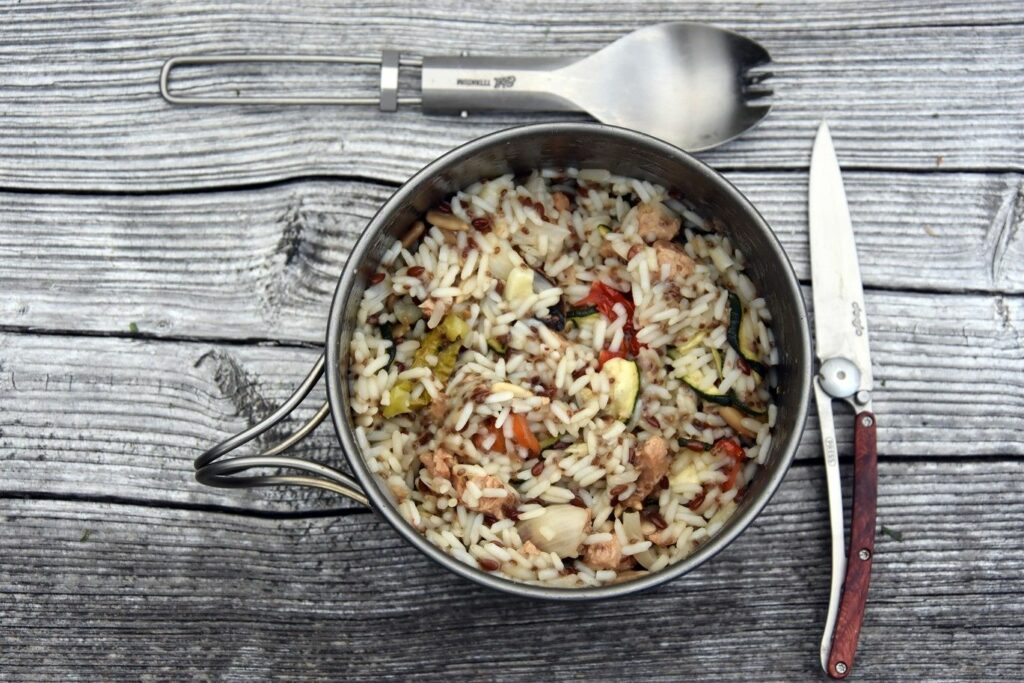
7) Elektronics
You can use your phone or any other flashlight to light your way, but for moving in more challenging night terrain or when setting up a tent, you need your hands free. A headlamp should definitely be part of your gear for any trek. Personally, I have found a small headlamp with a 200 lm light output to be sufficient for treks. However, if you plan to visit places like caves or if you’re skiing, I recommend a much stronger light.
My choice (200 lm): Petzl BINDI Mini Headlight, 34g
More powerful alternative (400 lm): Nitecore NU25 UL Headlamp, 47g
More powerful alternative (1100 lm): Petzl SWIFT RL Headlamp, 101g
A power source for your cell phone, headlamp, and other electronic devices. I prefer two power banks with smaller capacities over one large-capacity one – I can charge two power banks more quickly, and if I lose or damage one, I still have the other as a backup.
My choice: Nitecore NB10000 GEN3 Power Bank, 155g
On treks, I’ve found it useful to carry a spare USB cable. It’s something that can easily get damaged, and its condition can affect the functionality of my electronic devices.
Recommendation: PremiumCord USB 2.0 A/M – USB C, 25 g
The requirements for photography gear are highly individual. Some people will appreciate a lightweight trekking setup in order to carry at least three lenses and a tripod, while for others, a small compact camera would be unnecessary clutter because their cell phone is sufficient.
Mini Tripod: Joby GripTight ONE Micro Stand, 46 g
Remote for smartphones: Joby Impulse, 10 g
8) First Aid Kit
You can either assemble your own or buy a pre-equipped one. It’s important to know the contents well and be able to use them. Store-bought first aid kits often don’t include medications, and sometimes lack sufficient disinfectant, tweezers, or elastic bandages, so they need to be supplemented. The contents, in addition to basic first aid supplies, will depend on the ailments you’re prone to and the conditions you’ll be in, as well as the number of people in your group.
My choice: Customized Supportmed First Aid Kit, 166g
9) Other Equipment
Trekking poles help distribute the weight of your body and backpack, and they also engage muscles and joints other than just your legs. They assist in straightening your back and make uphill walking easier. They provide relief to your knees during descents and, in rough terrain (such as wetlands in tall grass, at night, or when crossing rivers), they extend your arms and turn them into useful walking aids.
My choice: Fizan Compact Trekking Poles, 2 x 162g
Especially on treks where you encounter snow, sunglasses with UV protection are an essential part of your gear.
Recommendation: Lifesystems SPF 50 Combi Stick, 33 g
I prefer natural repellents without DEET.
Recommendation: Incognito Repellent, from 63 g
My choice: Lifesystems Compact Tick Tweezers, 6 g
Something breaks on your gear? In the emergency kit, you’ll find items to help you repair it. Didn’t bring a water filter? Disinfection tablets will fix that. Lost your lighter, knife, need some cord, or run out of cooking fuel…? You can either assemble your own kit or buy one already equipped. However, the pre-packed ones don’t have everything I often need based on experience, so I put together my own survival kit and carry it in a transparent waterproof pouch instead of a box. On the other hand, I found so many incredibly small, practical gadgets in the pre-packed kit that I selected a lot of its contents as well.
Recommendation: Kousky světa Mini Survival Kit, 159 g
My choice: Tear Aid Repair Kit Type A, 46 g
Gear Aid Tenacious Tape, 10 g
Paper maps haven’t gone extinct! It’s a good idea to have a waterproof cover for them or, even better, have them laminated before the trip or printed on waterproof paper.
Waterproof pouch: aLOKSAK Waterproof Sack
Many people appreciate a lightweight and durable umbrella, for example, as protection from the sun. Trekking umbrellas can usually be attached to the shoulder strap of a backpack, keeping your hands free. However, it’s not a good solution in strong winds.
Recommendation: Gossamer Gear Lightrek Hiking Umbrella chrome, 177 g
For some, a relic of the digital age; for others, the most precious souvenir from their travels. Do you also keep journals while traveling?
My choice (pen): Fisher Space Pen The Stowaway, 15 g
Especially if you navigate using paper maps and are hiking off-trails, a compass will save you a lot of trouble.
Author: Viktorka Rys, review Pod 7 kilo
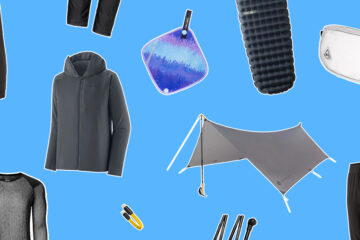
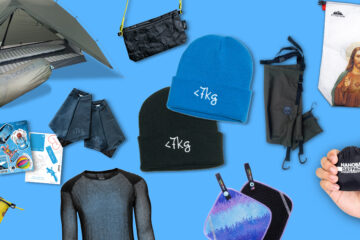
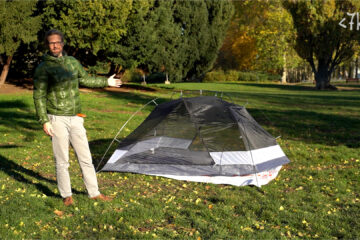
0 komentářů